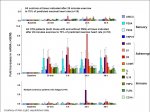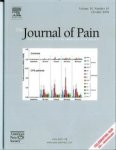gracenote
All shall be well . . .
- Messages
- 1,537
- Location
- Santa Rosa, CA
Moderate Exercise Increases Expression for Sensory, Adrenergic, and Immune Genes in Chronic Fatigue Syndrome Patients But Not in Normal Subjects
Alan R. Light, Andrea T. White, Ronald W. Hughen, Kathleen C. Light
Received 30 March 2009; received in revised form 10 May 2009; accepted 1 June 2009. published online 03 August 2009.
Abstract
Chronic fatigue syndrome (CFS) is characterized by debilitating fatigue, often accompanied by widespread muscle pain that meets criteria for fibromyalgia syndrome (FMS). Symptoms become markedly worse after exercise. Previous studies implicated dysregulation of the sympathetic nervous system (SNS), and immune system (IS) in CFS and FMS.
We recently demonstrated that acid sensing ion channel (probably ASIC3), purinergic type 2X receptors (probably P2X4 and P2X5) and the transient receptor potential vanilloid type 1 (TRPV1) are molecular receptors in mouse sensory neurons detecting metabolites that cause acute muscle pain and possibly muscle fatigue. These molecular receptors are found on human leukocytes along with SNS and IS genes.
Real-time, quantitative PCR showed that 19 CFS patients had lower expression of β-2 adrenergic receptors but otherwise did not differ from 16 control subjects before exercise.
After a sustained moderate exercise test, CFS patients showed greater increases than control subjects in gene expression for metabolite detecting receptors ASIC3, P2X4, and P2X5, for SNS receptors α-2A, β-1, β-2, and COMT and IS genes for IL10 and TLR4 lasting from 0.5 to 48 hours (P < .05).
These increases were also seen in the CFS subgroup with comorbid FMS and were highly correlated with symptoms of physical fatigue, mental fatigue, and pain. These new findings suggest dysregulation of metabolite detecting receptors as well as SNS and IS in CFS and CFS-FMS.
Perspective
Muscle fatigue and pain are major symptoms of CFS. After moderate exercise, CFS and CFS-FMS patients show enhanced gene expression for receptors detecting muscle metabolites and for SNS and IS, which correlate with these symptoms. These findings suggest possible new causes, points for intervention, and objective biomarkers for these disorders.
The full article is available in the Phoenix Rising Library (for Senior members who have access) or by going to the Dr. Lucinda Bateman thread here.
Alan R. Light, Andrea T. White, Ronald W. Hughen, Kathleen C. Light
Received 30 March 2009; received in revised form 10 May 2009; accepted 1 June 2009. published online 03 August 2009.
Abstract
Chronic fatigue syndrome (CFS) is characterized by debilitating fatigue, often accompanied by widespread muscle pain that meets criteria for fibromyalgia syndrome (FMS). Symptoms become markedly worse after exercise. Previous studies implicated dysregulation of the sympathetic nervous system (SNS), and immune system (IS) in CFS and FMS.
We recently demonstrated that acid sensing ion channel (probably ASIC3), purinergic type 2X receptors (probably P2X4 and P2X5) and the transient receptor potential vanilloid type 1 (TRPV1) are molecular receptors in mouse sensory neurons detecting metabolites that cause acute muscle pain and possibly muscle fatigue. These molecular receptors are found on human leukocytes along with SNS and IS genes.
Real-time, quantitative PCR showed that 19 CFS patients had lower expression of β-2 adrenergic receptors but otherwise did not differ from 16 control subjects before exercise.
After a sustained moderate exercise test, CFS patients showed greater increases than control subjects in gene expression for metabolite detecting receptors ASIC3, P2X4, and P2X5, for SNS receptors α-2A, β-1, β-2, and COMT and IS genes for IL10 and TLR4 lasting from 0.5 to 48 hours (P < .05).
These increases were also seen in the CFS subgroup with comorbid FMS and were highly correlated with symptoms of physical fatigue, mental fatigue, and pain. These new findings suggest dysregulation of metabolite detecting receptors as well as SNS and IS in CFS and CFS-FMS.
Perspective
Muscle fatigue and pain are major symptoms of CFS. After moderate exercise, CFS and CFS-FMS patients show enhanced gene expression for receptors detecting muscle metabolites and for SNS and IS, which correlate with these symptoms. These findings suggest possible new causes, points for intervention, and objective biomarkers for these disorders.
The full article is available in the Phoenix Rising Library (for Senior members who have access) or by going to the Dr. Lucinda Bateman thread here.



